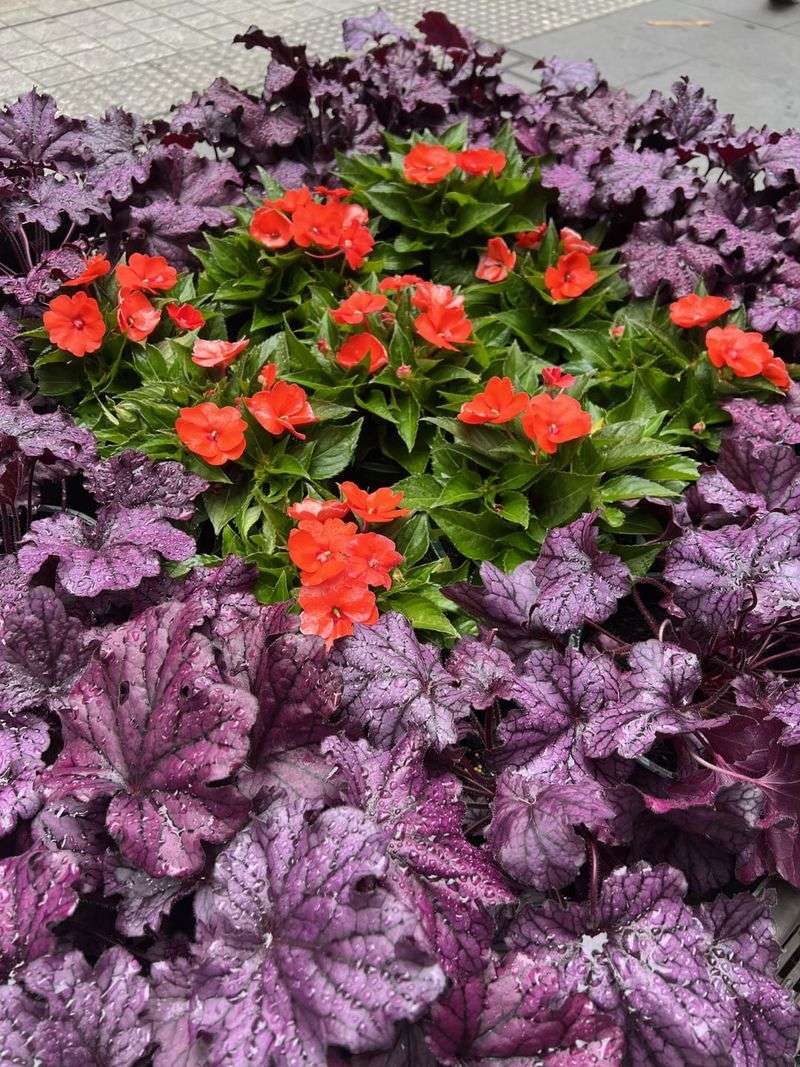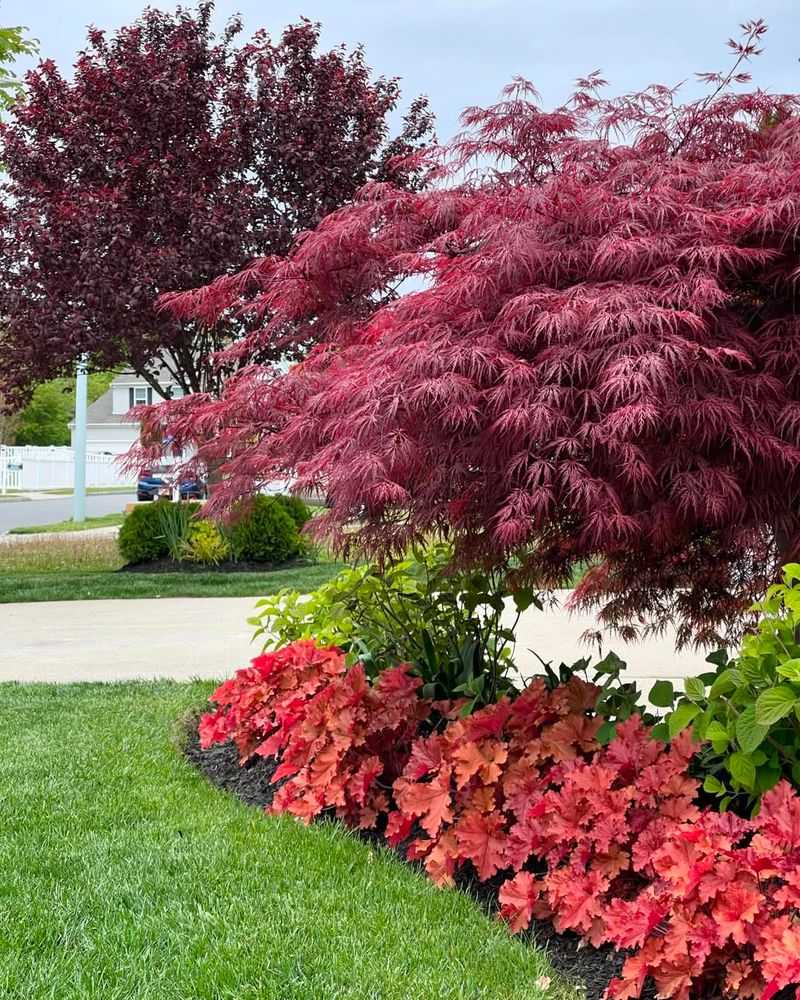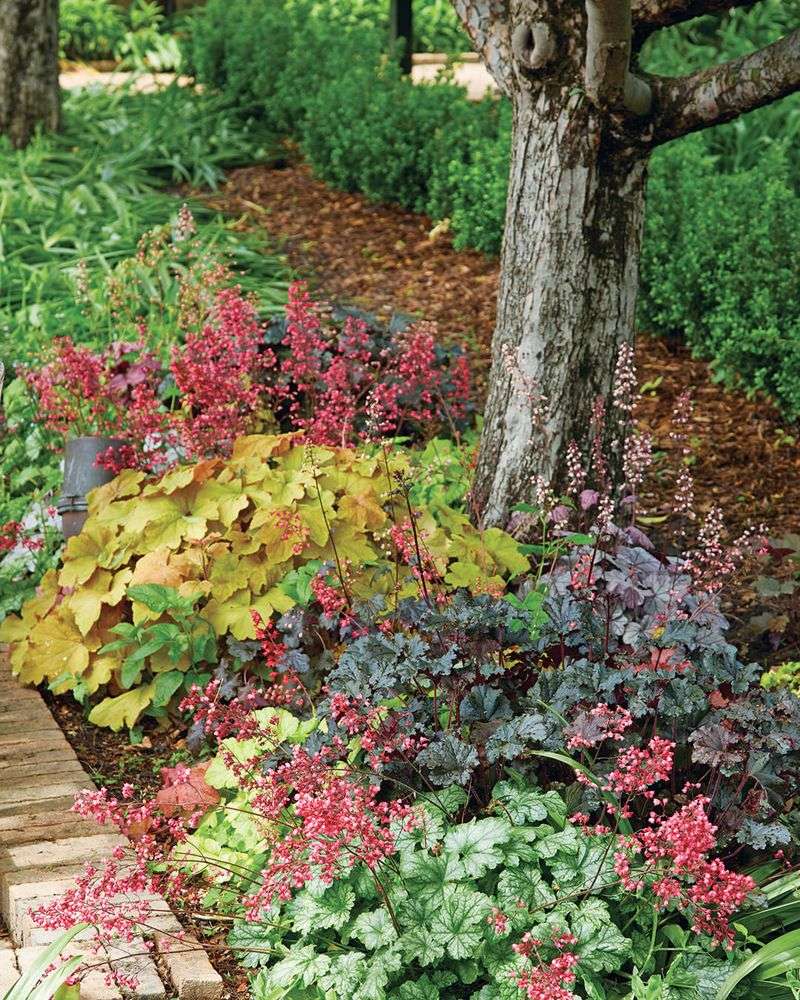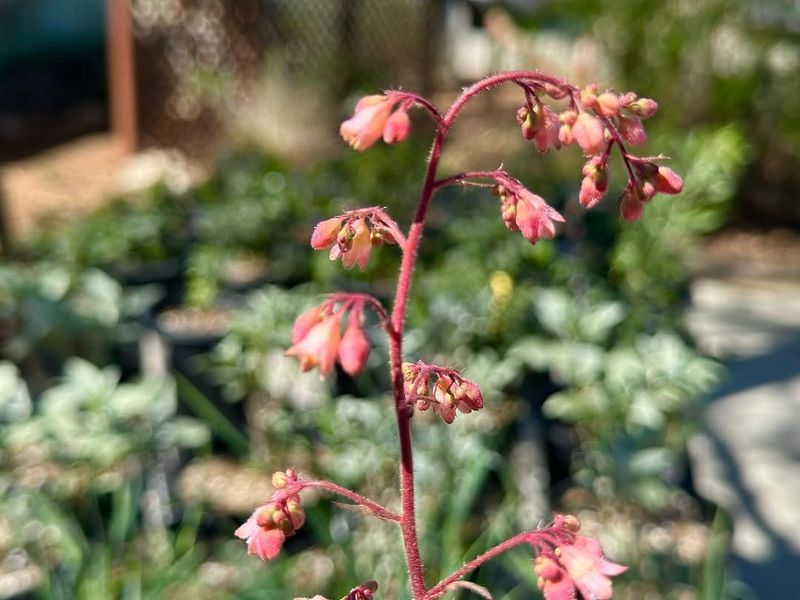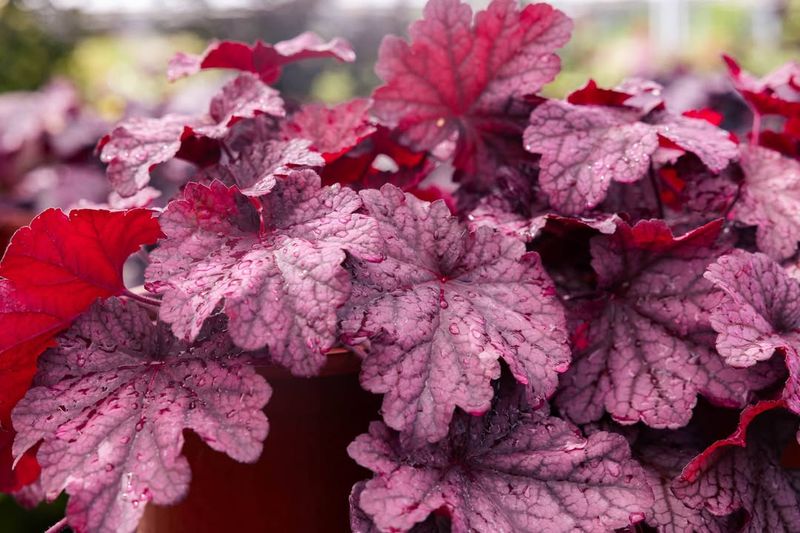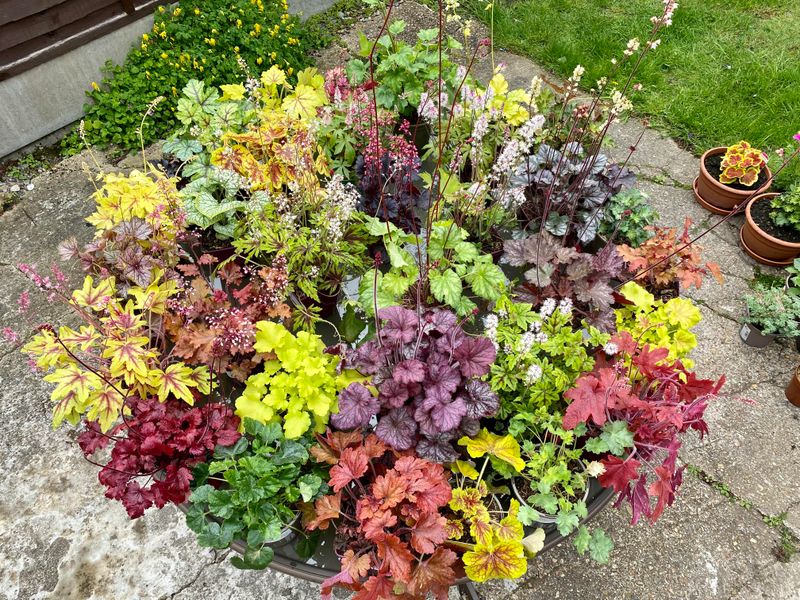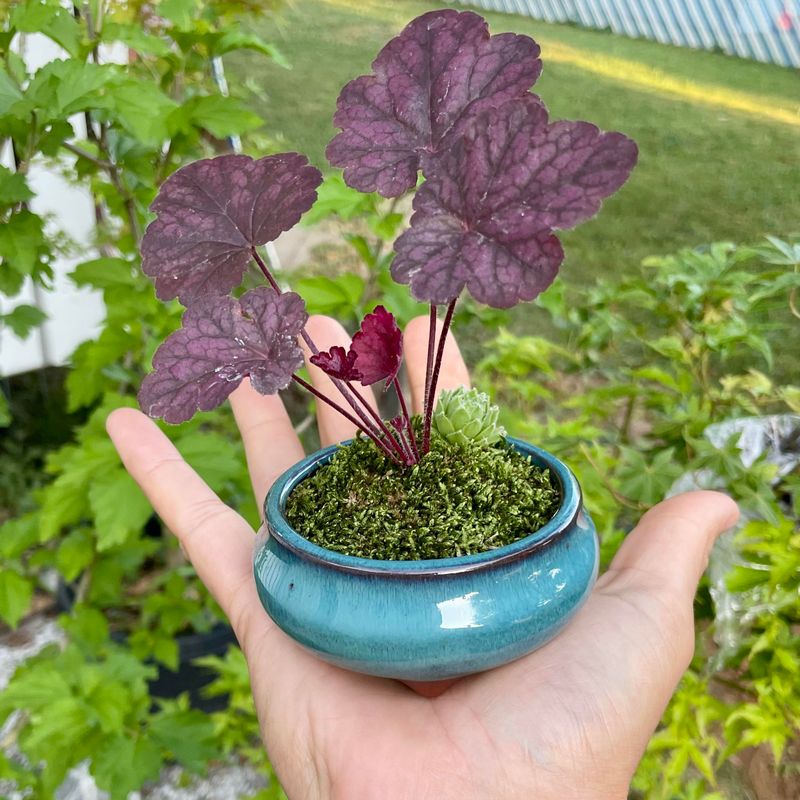A front yard in California can feel a bit bland until a plant steps up and steals the show, and coral bells often rise to that challenge with flying colors.
Their bold leaves add punch long before the flowers arrive, turning dull corners into spots that stop neighbors mid-stride.
Sunlit patios, shady porches, and everything in between gain flair once these vibrant mounds take root. Each variety brings its own personality, giving the landscape a lift that feels effortless yet striking. I’ll show you how coral bells transform ordinary spaces into standout scenes across the Golden State.
1. Add Year-Round Foliage Color
Unlike flowers that come and go with the seasons, Coral Bells keep their gorgeous leaves looking vibrant all year long. Their foliage ranges from deep burgundy to bright lime green, with some varieties showing stunning purple, silver, or even caramel tones.
California’s mild winters mean these plants never really go dormant, so your front yard stays colorful even during the coldest months. Plant several different varieties together to create a living rainbow that needs very little maintenance while delivering maximum visual impact throughout every season.
2. Create Eye-Catching Border Edging
Borders look instantly more polished when you line them with Coral Bells. Their compact, mounding shape works perfectly along pathways, driveways, or flower bed edges without sprawling out of control.
The contrast between their colorful leaves and green lawn grass creates a natural frame that guides the eye around your front yard. They grow to about 12 to 18 inches tall, making them the ideal height for defining spaces without blocking views. Mix different colored varieties along your borders for an artistic touch that looks professionally designed but stays budget-friendly.
3. Attract Hummingbirds To Your Yard
Watching hummingbirds zip around your front yard becomes a daily treat when you plant Coral Bells. During late spring and summer, these plants send up delicate flower spikes covered in tiny, tubular blooms that hummingbirds absolutely love.
The flowers come in shades of pink, red, white, and coral, waving gently on tall stems above the foliage. California’s resident Anna’s Hummingbirds visit them constantly, adding movement and life to your landscape. Plant Coral Bells near a window where you can watch these tiny acrobats perform their aerial shows while sipping nectar.
4. Thrive In Partial Shade Areas
Got a tricky shaded spot under a tree or beside your house where nothing seems to grow? Coral Bells actually prefer some shade, especially from California’s intense afternoon sun.
They flourish in those problem areas where sun-loving plants struggle, bringing color to spaces that usually stay bare and boring.
Morning sun with afternoon shade creates the perfect conditions for these adaptable perennials. Their shade tolerance makes them incredibly versatile, letting you fill in those awkward corners and dark patches that other plants just can’t handle successfully.
5. Require Minimal Water Once Established
California gardeners know that drought-tolerant plants are essential, and Coral Bells fit the bill perfectly once their roots settle in. After the first growing season, they need watering only every week or two, depending on your local climate and soil type.
This low water requirement saves money on your utility bills while helping conserve our precious water resources. They’re much tougher than they look, handling dry spells without wilting or losing their beauty. Pair them with other drought-smart plants for a water-wise front yard that still delivers stunning visual appeal.
6. Complement Other California Natives
Mixing Coral Bells with California native plants creates a landscape that looks naturally harmonious while supporting local ecosystems. They pair beautifully with natives like California Fuchsia, Salvia, and ornamental grasses, creating layers of texture and color.
The burgundy and purple varieties look especially striking against the silvery foliage of California Sagebrush. Because Coral Bells share similar water and sun requirements with many natives, they integrate seamlessly into existing gardens.
This combination gives you the best of both worlds—cultivated beauty meeting wild California charm in your own front yard.
7. Provide Textural Contrast In Gardens
Garden design becomes more interesting when you play with different leaf shapes and textures. Coral Bells bring rounded, ruffled foliage that contrasts beautifully against plants with spiky leaves or fine, feathery textures.
Place them next to ornamental grasses, succulents, or ferns to create visual depth that makes your front yard feel more professionally landscaped.
Their mounding habit also breaks up vertical elements, adding balance to beds dominated by tall, upright plants. This textural variety keeps the eye moving around your garden, discovering new details with every glance instead of seeing just a flat, monotonous landscape.
8. Stay Evergreen Through California Winters
While gardens in colder states turn brown and bare, California landscapes can maintain their beauty thanks to evergreen plants like Coral Bells. Their leaves persist through winter, keeping your front yard looking alive and cared for when other perennials fall back.
Some varieties even develop richer, deeper colors during cooler months, adding unexpected winter interest. You won’t face that depressing sight of empty garden beds or have to wait months for spring regrowth.
Their evergreen nature means your landscaping investment pays off every single day, regardless of the season or temperature outside.
9. Offer Easy Propagation And Expansion
Want more Coral Bells without spending more money? These generous plants divide easily every few years, letting you expand your collection or share with neighbors and friends.
Simply dig up an established clump in early spring or fall, gently pull apart the roots into smaller sections, and replant them wherever you need more color.
Each division grows into a full-sized plant within a season or two, filling out your front yard faster than you’d expect. This natural multiplication means your initial investment keeps giving back, allowing you to redesign and expand your landscape affordably over time.


